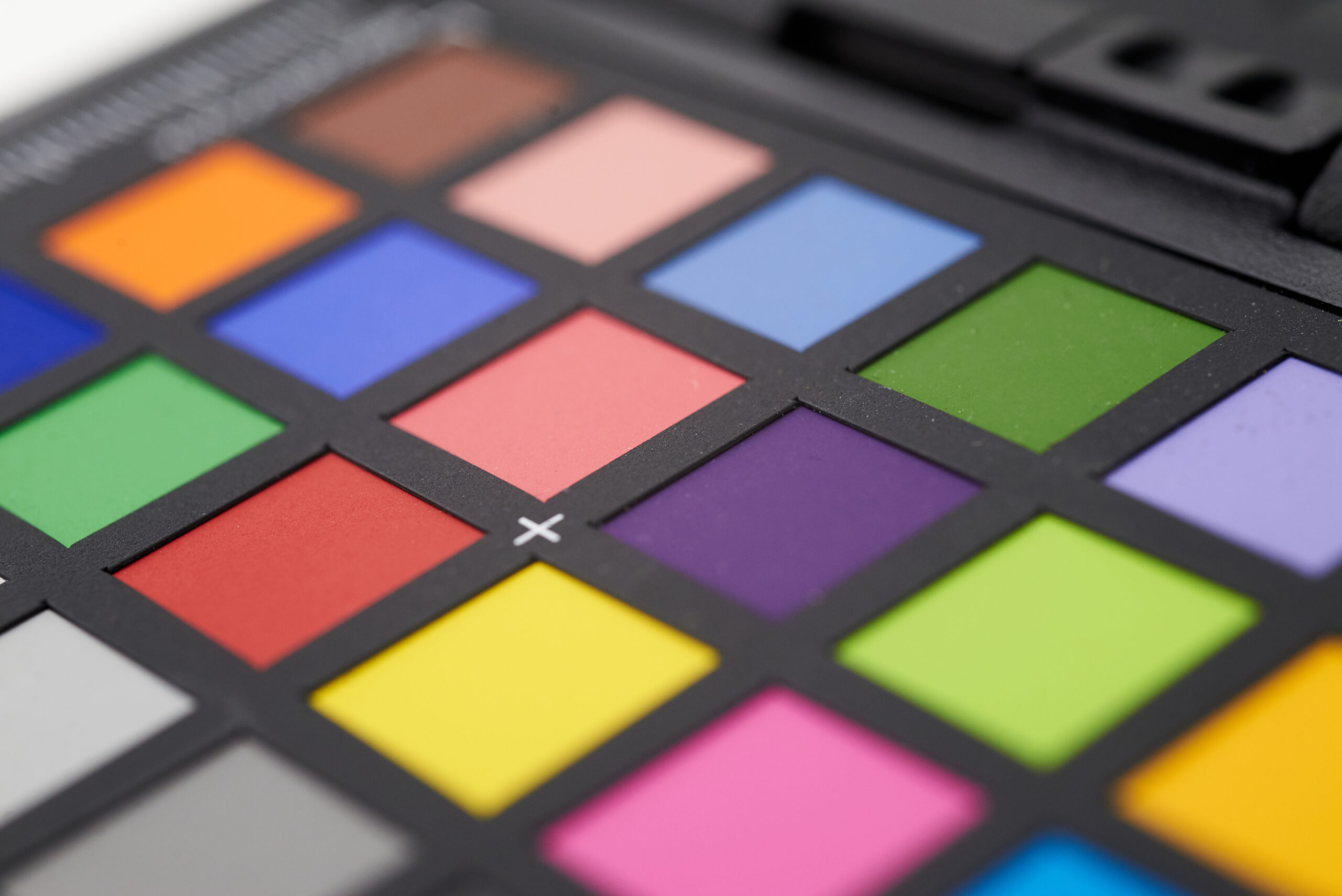Green Chromium Oxide Refractory Uses Clarified.
Are you aware that around 80% of the world’s chromium output is used for producing refractories? Green chromium oxide, scientifically called Cr2O3, stands out for its unique features. These qualities render it essential in high-temperature applications. It increases strength and oxidation resistance in a range of industries.
This write-up will examine the extensive uses of chromium oxide green in refractories. We will highlight its importance in today’s industrial landscape. Let’s discover why this versatile material is indispensable.
Introduction to Chromium Oxide Green
Green chromium oxide is a rich green substance renowned for its multi-use potential and sturdiness. It is key in the sector of refractories thanks to its special characteristics. This substance goes beyond boosting the look of manufactured goods, but also delivers significant functional benefits for exacting applications.
In the refractory industry, green chromium oxide is essential. It improves the thermal endurance and longevity of products in extreme environments. This covers applications in steel manufacturing and glassworks. As companies advance, the material’s importance grows, providing answers for high-temperature scenarios where performance is critical.
Green chromium oxide is more than just a pigment; it’s a vital component for high-performance industrial applications. Its adaptability and strength turn it into a crucial element in the manufacture of reliable refractory products.
Understanding Chromium Oxide and its Composition
Green chromium oxide, primarily known Cr2O3, is a chemical made up of chromium element and oxygen. Its chromium oxide composition showcases distinct properties that improve its application in multiple fields. This chemical configuration is solid and secure, providing durability in challenging environments.
The heat-resistant traits of green chromium oxide stand out in industries demanding substances that withstand high temperatures. It exhibits a resilient power to resist thermal shock. This makes it ideal for refining and other industrial processes where temperature is vital.
Understanding the details of chromium oxide composition helps industries exploit its natural advantages. Its capacity to resist stress enhances overall effectiveness. This places green chromium oxide as a preferred option among refractory materials.
Importance of Chromium Trioxide in Refractory Applications
Trioxide of chromium is key for the performance of refractories thanks to its special qualities. It boosts the stability and strength of these compounds in challenging settings. This understanding is crucial for grasping its position alongside chromium oxide in different industries.
Function of Chromium Trioxide in Boosting Stability
Refractory materials are required to endure intense thermal conditions without degrading. Chromium trioxide enhances their heat tolerance and internal strength. This results in less wear and tear, rendering it vital for sectors demanding reliable substances.
Comparison of Chromium Oxide and Chromium Trioxide
Green chromium oxide and trioxide of chromium have distinct roles in thermal-resistant products. Both are crucial, but are not the same in their qualities:
| Feature | Chromium Oxide | Trioxide of Chromium |
|---|---|---|
| Thermal Stability | Consistent thermal tolerance | Superior heat tolerance |
| Application | Frequently applied in refractories | Ideal for high-temperature environments |
| Strength | Moderate durability | Significantly boosts durability |
This side-by-side look emphasizes the unique contributions of chromium oxide and chromium trioxide to thermal-resistant substances. Their different characteristics boost effectiveness and lifespan in a range of sectors.
High-Temperature Resistance Properties of Chromium Oxide Green
Chromium oxide green demonstrates exceptional traits, rendering it perfect for thermal uses. Its fusion temperature goes up to 2400°C, providing unparalleled build quality in harsh environments. This is crucial for sectors demanding strength, most notably in metalworking industries.
Heat Tolerance and Strength
Green chromium oxide is well-known for its high-temperature fusion point, vital for preserving the strength of refractory materials. This heat tolerance lets it withstand extreme heat without deforming. Its ability to resist melting turns it into a necessity in applications requiring reliability.
Role in Iron and Steel Production
In metalworking, chromium oxide green’s ability to withstand heat is invaluable. It’s often applied in heat-resistant bricks for furnaces and heat chambers. These structural units are subjected to extreme environments and need to maintain integrity. Green chromium oxide’s high melting point makes them effective, boosting performance in iron manufacturing.
Gains of Chromium Oxide Green in Refractories
Chromium oxide green greatly boosts refractory compounds, important for multiple sectors. It enhances structural features and resistance to oxidation. These improvements improve the longevity and effectiveness of refractories.
Enhancing Structural Traits
Including green chromium oxide into refractory materials notably boosts their structural qualities. Key benefits include:
- Enhanced toughness: Chromium oxide green’s durability increases materials’ ability to resist wear against abrasion.
- Enhanced wear resistance: Its composition lowers the impact of usage from constant wear, boosting the longevity of products.
- Higher flexural strength: This trait allows heat-resistant materials to withstand physical pressure, suiting exacting uses.
Oxidation Resistance in High-Temperature Applications
Green chromium oxide’s ability to withstand oxidation is essential in high-temperature environments. The benefits are:
- Extended longevity: Heat-resistant materials endure more, withstanding intense heat.
- Improved functionality: They undergo less wear and tear, ensuring consistent output in industries.
- Reduced upkeep expenses: Less material change of components reduces expenses for sectors using refractories.
These chromium oxide green gains improve the functionality of refractories and support sustainability. They prolong product use and reduce waste.
Chromium Oxide Green Refractory Uses Explained
Green chromium oxide has proven vital in a range of sectors thanks to its distinct properties. It is effective in different industries, from steelmaking to glass production. Its importance as a critical component in heat-resistant compounds highlights its importance.
Applications in Various Industries
Green chromium oxide is essential in various fields for enhanced functionality. Here are the primary fields and their specific uses:
- Metal Manufacturing: It’s employed in making refractory bricks and castables, offering heat resistance and endurance against usage.
- Glass Production: In heat-resistant coatings, it guarantees intense heat and delivers chemical integrity.
- Ceramics Manufacturing: As a pigment in ceramic finishes, it provides coloration, strength, and build quality.
- Cement Industry: It boosts the quality of heat-resistant compounds for extreme heat settings.
Diverse Uses of Refractories
Green chromium oxide’s versatility isn’t limited to individual sectors. Its roles include a wide range, for example:
- High-performance refractory bricks
- Castable refractories for challenging settings
- Heat-resistant furnace linings
- Heat-resistant ceramics
This broad application spectrum proves green chromium oxide’s significance in improving manufacturing processes. Its distinct properties enable companies achieve their operational goals, ensuring better performance and material longevity.
Key Industrial Uses of Chromium Oxide Green
Chromium oxide green is crucial in many fields, famous for its multi-use capabilities and performance. It is mainly used in the field of heat-resistant materials, enhancing thermal stability and physical resilience. This material is vital in materials created for harsh environments.
In the creation of thermal-resistant components and linings, chromium oxide green is prominent. These components are vital in intense thermal situations like ovens, smelting chambers, and burning devices. Incorporating green chromium oxide enhances their effectiveness, ensuring they endure more and work reliably.
- Ceramics Production: Chromium oxide green is key in clay-based products, enhancing color stability and build quality.
- Metal Production: It is used in metallurgy for instruments and parts requiring heat tolerance.
- Glass Production: In glass production, chromium oxide green ensures the longevity of melting tanks.
This substance is vital outside standard uses but also in new materials. The push for energy-efficient solutions is driving its application in next-generation heat-resistant compounds.
As sectors emphasize output and effectiveness, green chromium oxide proves indispensable. Its broad field of applications emphasizes its importance across different industries. This proves its significance in the modern refractory industry.
Methods of Producing Chromium Oxide Green
The production of green chromium oxide utilizes several established techniques, each with unique advantages and issues. These techniques are important for creating high-purity chromium oxide green, vital for its diverse uses. Methods such as burning, hydrothermal, and solid formation are key in manufacture and quality control.
Standard Production Techniques
Numerous conventional manufacturing processes are utilized in chromium oxide green creation. These comprise:
- Combustion Method: This process consists of the combustion of chromium salts with organic materials. It is productive and has a minimal ecological footprint.
- Hydrothermal Method: This technique uses the interaction of chromium oxides in an liquid phase under high pressure and heat. It creates highly crystalline materials.
- Precipitation Method: This method requires the precipitation of chromium compounds from aqueous solutions. It allows for control over the size of particles and shape.
Each technique provides distinct benefits, such as affordability and expandability, but also comes with issues like quality and irregular granule dimensions. Picking the best technique significantly impacts the output characteristics and its applicability for particular uses.
Quality Control in Production
Ensuring product quality is vital in the production of green chromium oxide. It guarantees the end result complies with regulations for purity and regularity. Main quality control aspects are:
- Consistent examination of base substances to guarantee good-quality components for manufacturing chromium oxide green.
- Monitoring of production parameters, such as heat and force, during the different preparation methods.
- Produced material evaluation for chemical composition and physical properties, guaranteeing adherence with required norms.
Reliable monitoring techniques enhance the consistency and effectiveness of green chromium oxide for its wide-ranging roles. This underscores the significance of these production techniques in the overall process.
Sustainability in the Production and Use of Chromium Oxide Green
The movement toward green practices is transforming the green chromium oxide sector. Environmental protection is now a primary focus as manufacturers seek methods to reduce emissions. By incorporating sustainable practices, they reduce emissions and conserve materials.
Integrating sustainability into the manufacturing of green chromium oxide meets both legal standards and market expectations. Companies are now more conscious of their environmental impact. By using advanced processes, they enjoy benefits such as:
- Using waste materials in production, which minimizes new resource extraction.
- Improving power consumption in manufacturing.
- Enhancing recycling practices to minimize environmental harm.
Chromium oxide green’s sustainable use is also clear in various sectors. For instance, it is instrumental in pollution control devices, lowering harmful emissions. This demonstrates the significance of green initiatives in the sector of heat-resistant materials.
| Practice | Overview | Eco-Friendly Impact |
|---|---|---|
| Resource Efficiency | Employing waste materials in manufacturing | Reduces demand for raw materials |
| Power Consumption | Processes to optimize energy use | Minimizes carbon footprint |
| Emission Control | Installation of advanced filtration systems | Reduces toxic emissions |
| Waste Management | Optimizing waste recycling processes | Minimizes material waste |
As companies shift toward eco-friendly practices, chromium oxide green production and use become crucial. They demonstrate how eco-conscious methods and technological advances can collaborate, leading to a more sustainable future.
Advancements in Refractory Uses of Chromium Oxide Green
The domain of refractory industry is poised for substantial evolution, particularly with progress in green chromium oxide use. As companies prioritize efficiency and sustainability, the future development of this substance takes on added significance.
New innovations are driving innovation in the use of green chromium oxide, such as:
- Improved heat resistance for improved durability in challenging settings.
- Advanced mixtures that increase its role in metalworking and clay-based products.
- Next-generation production processes to lower emissions while maintaining quality.
Chromium oxide green’s integration into new heat-resistant materials ensures reliable outcomes for sectors worldwide. Relentless R&D is set to leverage this material’s unique properties. This ensures it stays important in cutting-edge refractory technology.
By embracing these advancements, sectors can boost the effectiveness and environmental responsibility of their thermal-resistant solutions. This ensures the future of green chromium oxide extremely bright.
Summary
Chromium oxide green is a key compound that enhances the strength and effectiveness of refractory products across various fields. Its exceptional properties, such as high-temperature resistance and resistance to oxidation, are vital for steel production and pottery sectors.
The discussion of the uses of green chromium oxide demonstrates its flexibility and importance in modern manufacturing. Ongoing innovations in manufacture enhance its potential, promising it continues to be essential for demanding roles.
As the trend toward eco-friendly production expands, chromium oxide green’s role is set to increase. Its use in developing green heat-resistant products highlights its vital role in the modern refractory industry. This promises increased efficiency and productivity in a rapidly evolving industrial field.


